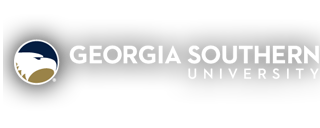Type of Presentation
Individual paper/presentation (20 minute presentation)
Target Audience
Higher Education
Location
Room 1002
Proposal
Faculty are increasingly implementing pedagogies that create cultures of inquiry in their classes and teach information use as a part of their discipline subject content. Informed Learning is a pedagogy that focuses on “learning subject content through engaging with academic or professional information practices” (Bruce et al, 2010) and is the most effective way of teaching information literacy. Evidence gathered via interviews with 24 teaching faculty reveal how information literacy is a part of the teaching and learning that occurs serendipitously and intentionally in first-year courses. The faculty describe five qualitatively different ways that students experience information use throughout their course, explaining that the purpose of these experiences is to produce students who are experienced consumers of information, and who are also active participants in scholarly conversations. Faculty foster and nurture these behaviors because they view them as intrinsic and necessary to their discipline, and fundamental to the practices of effective researchers. This presentation will discuss these information experiences, and examine the pedagogy and teaching strategies that are used in the teaching of information literacy throughout the duration of the course. The presentation will show how the ACRL framework can be integrated into the subject content, and provide some teaching strategies that academic librarians can adopt in their own instruction.
Presentation Description
This presentation gives the background and results of an investigation of ‘Informed Learning’ in first-year college courses. The presenter will discuss the variety of information experiences that students encounter while learning their discipline content and illustrate how the ACRL Framework can inform pedagogy. An explanation of how the framework correlates with the perceptions and pedagogy of the teaching faculty will also be addressed highlighting teaching strategies that can be adopted by librarians as they design information literacy instruction.
Keywords
Informed Learning, Instructional Design, ACRL Framework, Threshold Concepts, Critical Thinking, First Year Instruction
Publication Type and Release Option
Presentation (Open Access)
Recommended Citation
Dawes, Lorna M., "Informed Learning and the ACRL Framework: what faculty teach and how students learn." (2018). Georgia International Conference on Information Literacy. 1.
https://digitalcommons.georgiasouthern.edu/gaintlit/2018/2018/1
Informed Learning and the ACRL Framework: what faculty teach and how students learn.
Room 1002
Faculty are increasingly implementing pedagogies that create cultures of inquiry in their classes and teach information use as a part of their discipline subject content. Informed Learning is a pedagogy that focuses on “learning subject content through engaging with academic or professional information practices” (Bruce et al, 2010) and is the most effective way of teaching information literacy. Evidence gathered via interviews with 24 teaching faculty reveal how information literacy is a part of the teaching and learning that occurs serendipitously and intentionally in first-year courses. The faculty describe five qualitatively different ways that students experience information use throughout their course, explaining that the purpose of these experiences is to produce students who are experienced consumers of information, and who are also active participants in scholarly conversations. Faculty foster and nurture these behaviors because they view them as intrinsic and necessary to their discipline, and fundamental to the practices of effective researchers. This presentation will discuss these information experiences, and examine the pedagogy and teaching strategies that are used in the teaching of information literacy throughout the duration of the course. The presentation will show how the ACRL framework can be integrated into the subject content, and provide some teaching strategies that academic librarians can adopt in their own instruction.

